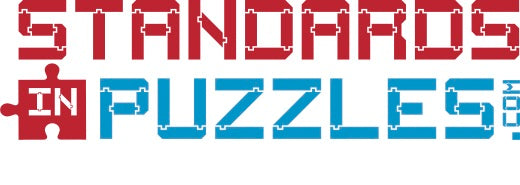
Sitting in one seat for a full class period is excruciating for some students. Having them wandering from their seats is even worse for the teacher. When a student is constantly up and down it's not only distracts the class, it distracts you.
Last spring, just as the students were beginning to get squirrely, I was pleasantly surprised to find that several of my most easily distracted (and distracting) students were entranced by a simple 250 piece jigsaw puzzle. How could this be? Jigsaw puzzles are so last-century. So low tech.
Here’s how:
1. Increased Concentration
According to social-psychiatry.com, the act of working a puzzle makes students alert and increases concentration and creativity. Looking at the images constantly helps them practice visualization and positively affects physical health by lowering the breathing and heart rates.
Working on jigsaw puzzles and focusing on the same image for longer periods can actually turn out more like meditation and induce a certain calmness and peace in the mind. The mind will now be focused only visualizing the image in front and will concentrate on this alone in exclusion to everything else around him. Thereby he arrives at a meditative and peaceful stage where no other thoughts occur to disturb his tranquility.
2. Therapeutic Benefits
The connections that a student makes during his time in front of a puzzle exercise both sides of the brain, allowing it to move from a state of wakefulness to a subconscious dreamlike state in which creative connections are made on a deeper level.
3. Enhanced Metacognition
According to the Mental Health Guide, turning, fitting, and re-assessing where the pieces might go is great practice in making choices. It requires constant checking and re-evaluation of decisions and emphasizes the process as an integral part of a solution.
4. Increased Problem Solving Skills
For our earliest ancestors, recognizing shapes and patterns was a matter of survival. It helped them identify the hazards and pitfalls in their dangerous and brutal world. Solving jigsaw puzzles simulates those same processes, requiring students to discern how each piece fits into the greater schema.
5. A Sense of Fulfillment
As adults, we know that taking one bite at a time is the only say to eat the metaphorical elephant. Adolescents and young children, however, are often mystified when it comes to accomplishing big things. Jigsaw puzzles are a tangible way of teaching students that completing a complex problem means succeeding at a series of small actions. They teach patience and show that periods of quiet problem solving can end with a great sense of satisfaction.
Sources:
Grabina, Irina. "How are jigsaw puzzles good for the brain?" Quora.com. N.p., 8 Jan. 2016. Web. 5 May 2017.
"The healing power of jigsaw puzzles." Jigsawjungle.com. Jigsaw Jungle International.com, n.d. Web. 10 May 2017.


1 comment
These work great. Kids love tthem and stay focused.